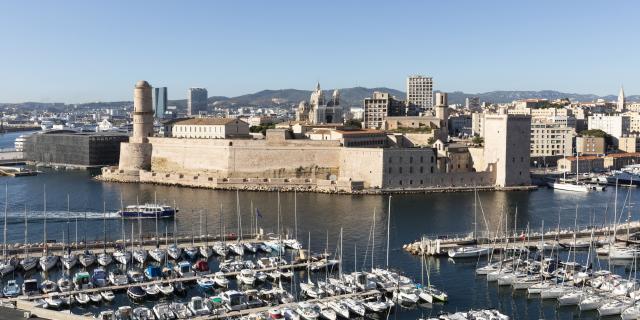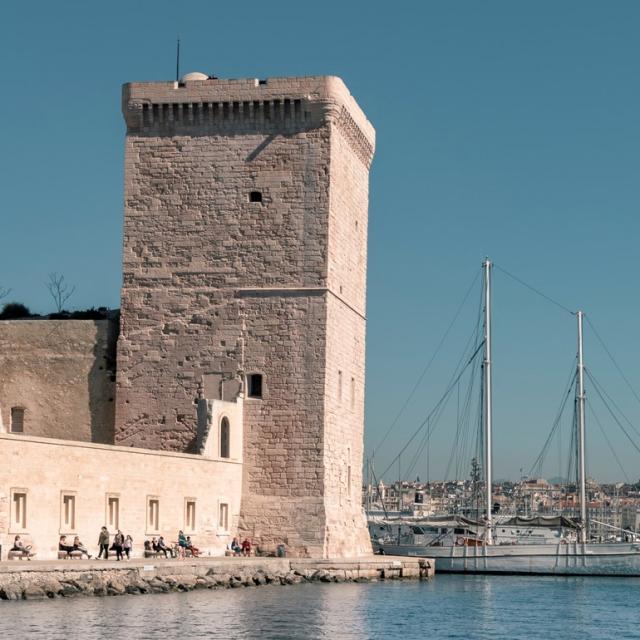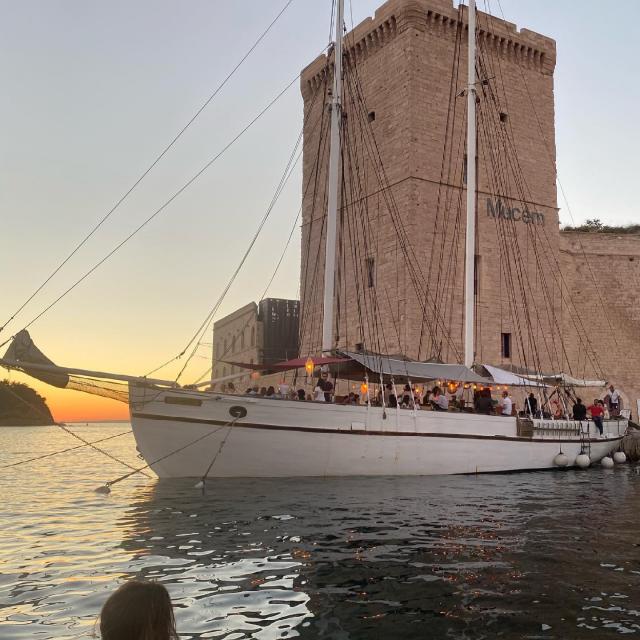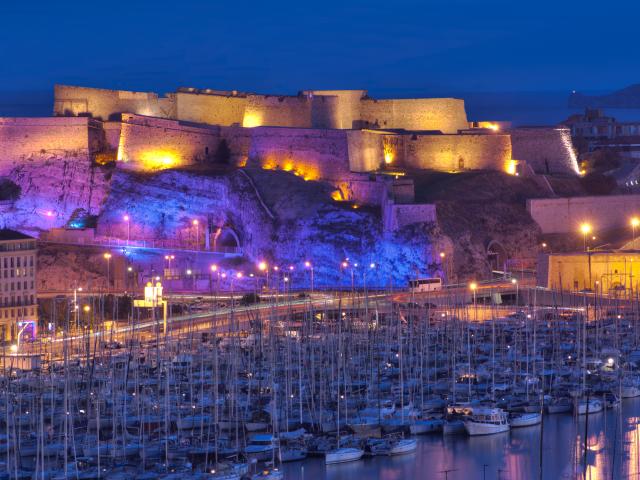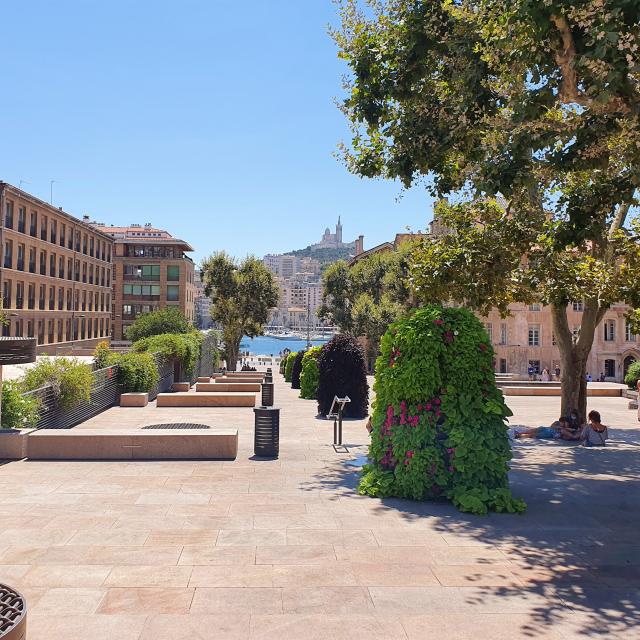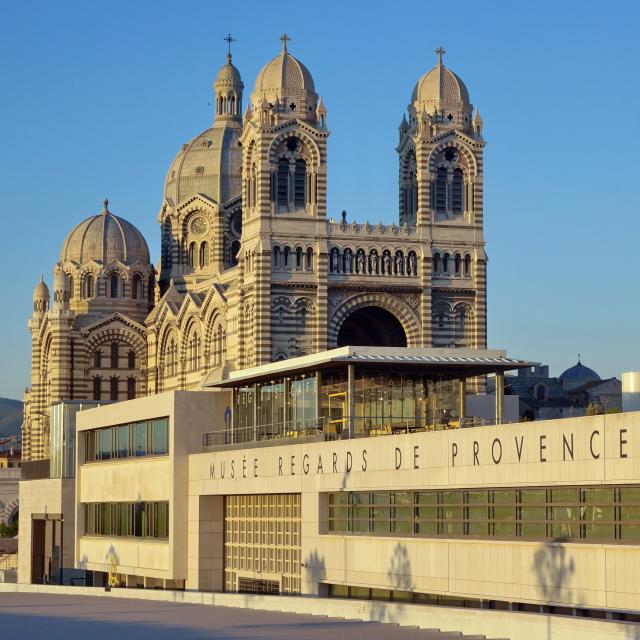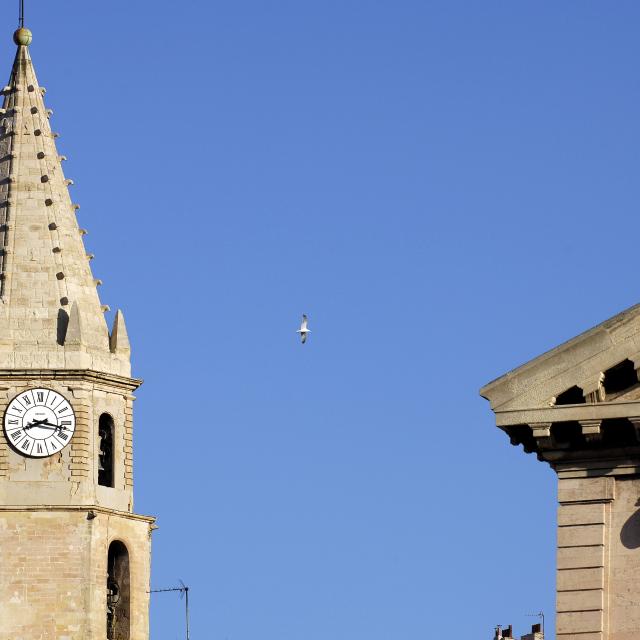Fort Saint-Jean
Fort Saint-Jean is positioned on the right when facing the Vieux-Port. It belongs to a military complex inseparable from Marseille’s history. Ancient commandery of the Hospitaliers de Saint-Jean, it served as the departure point for the troups to Jerusalem during the crusades of the 12th century. A chapel, church, hospital and palace made up the commandery, which was completed in 1365. The King René wished to build a large square tower – built between 1447 and 1453 – to protect the port more effectively. It wasn’t until in the middle of the 17th century that the round tower that characterizes the fort was put in place.
In 1664, shipowners considered fortifying the site by adding a watchtower visible 20 kilometers from Marseille’s roadstead in order to facilitate the task of trading ships. On the orders of Louis XIV, Fort Saint-Jean was built between 1668 and 1671 following the expulsion of the Hospitaliers. After a rebellion by the Marseillais, it is isolated from the rest of the city by the digging of a moat by Vauban, French engineer and architect. Until the French Revolution, the complex retained a military vocation before being transformed into a state prison. During the Second World War, the fort, which served as an ammunition depot for the Germans, was severely damaged by an accidental explosion.
Facing Fort Saint-Nicolas, Fort Saint-Jean is now one of Marseille’s most visited monuments by tourists and locals alike, who like to stroll there to enjoy an enchanted perspective on the port and harbor. Nowadays, the fort is a cultural venue where exhibitions and audiovisual shows are presented. It is linked to the vast space dedicated to the Mucem, France’s first major museum dedicated to the Mediterranean, and to the ‘Church of Saint-Laurent, by footbridges.
Address:Promenade Louis Brauquier – 13002 Marseille
